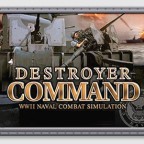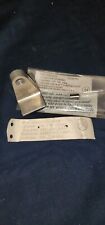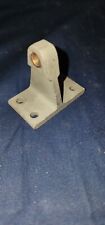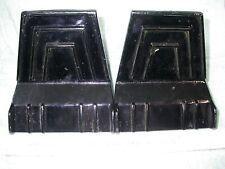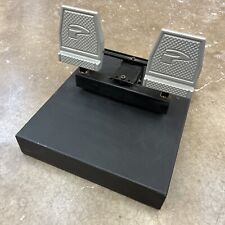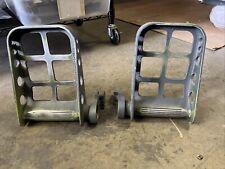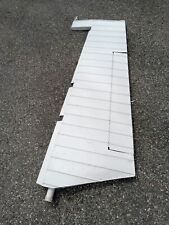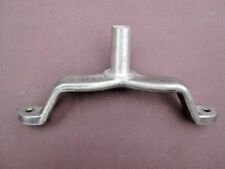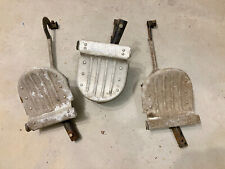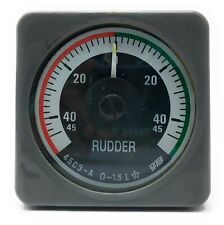ScrLk – Engine Room
I think this station is intended to allow the player to assume the role of Engineer Officer of the Watch (EOOW), but it’s very crudely done. The only controls are faucet like handles to place the boiler “online” or “off-line” and knobs to connect the boiler to the port or starboard engine. There’s no attempt to model the electric plant, which is just as important as the propulsion plant. After all, the EOOW’s main job is to keep the shafts turning and the lights burning. There’s no POT and no means to control the throttle wheel.
Placing the faucet like handle to the horizontal position gets an immediate “Sir, boiler is on line” response. Wow! Not even gas turbines come on line that fast!! A real boiler is “online” when fires are lit, steam pressure is equal to main steam line pressure and the main steam stop valve is open. This can take anywhere from 30 to 90 minutes to attain after fires are initially lit in the boiler. A gauge that looks something like an ammeter is assigned to the virtual boiler, but there’s no explanation what this indicates. Steam pressure? Superheater outlet temperature? Steam flow? Same goes for the engine “ammeter.” Is this main condenser vacuum?
The boiler assignment knobs allow the player to place the engineering plant in a configuration that would be either impossible or transitional only on the real ship. For example, I could assign the #1 and #3 virtual boilers to the starboard shaft and the #2 and #4 virtual boilers to the port shaft. The picture below is the engineering plant layout for the DD 445 and DD 692 classes. The Main Steam and Condensate piping systems on an actual destroyer plant simply do not support the simulated configuration. In addition, one can have all four virtual boilers on line in a cross connected configuration. While attainable on a real plant, this is strictly a short term (i.e., several minutes only) configuration used only while cross connecting or splitting out the steam plant. The plants are never perfectly matched and one plant usually winds up stealing water from the other plant. I’ve seen some pretty interesting “water wars” occur between plants while cross connecting!
Machinery arrangement, DD 445 and DD 699 classes.
(Click on the thumbnail above for an enlarged image).
There are three steady state configurations for the real 600 PSI destroyer of plant. They are:
Split Plant
#1 and/or #2 Boiler(s) providing steam to #1 Engine Room (starboard shaft and forward electric plant)
Main Steam Cross Connect Valve is shut #3 and/or #4 Boiler(s) providing steam to #2 Engine Room (port shaft and aft electric plant)
This configuration provides the most redundancy and, if all four boilers are online, maximum power. It is also the least fuel efficient.
Cross Connected, Forward
#1 and/or #2 Boiler(s) providing steam to both #1 and #2 Engine Rooms
Main steam Cross Connect Valve is open
This configuration is used when full power is not required and/or the steam generating plant in the aft fire room is not available (maintenance, battle damage, etc.). Up to 50% power is available, which would enable the ship to attain about 80% of it’s maximum speed. This configuration is more fuel efficient than the split plant configuration.
Cross Connected, Aft
#3 and/or #4 Boiler(s) providing steam to both #1 and #2 Engine Rooms
Main steam Cross Connect Valve is open
Same comments as for Cross Connected, Forward, except it now applies to the aft fire room.
At night the ScrLk Engine Room is rigged for red lighting, which it never is on the real ship. On the ships I served on there weren’t any red light bulbs to be found in the engineering spaces. The engineers’ jobs do not require dark adapted vision and the engineering spaces are always brightly lit. This effect can be deleted.
The virtual ship is modeled as having one huge fuel tank. A real destroyer will actually have some 10-15 fuel oil tanks. OK, the intent of the game is to place the player in the role of the ship’s captain, not the oil king, but it does seem odd having a gas gauge similar to the one in my car!
Pause/Break – Damage Control
Not tested yet.
New Missions?
Destroyers were, and indeed still are, multi-purpose vessels, and there are numerous missions that can be quite a challenge. Should there be another release of the game, here are some capabilities and missions I recommend for inclusion:
- Underway Replenishment (UNREP) – WW II destroyers were not nuclear powered, and even if they were, they did not carry an unlimited supply of parts, ammunition, food and, most importantly of all, the latest movies. This mission could also include personnel transfers. Now here’s a ship handling challenge! Transfer rigs and close ship-ship interaction need to be modeled.
- Search and Rescue (SAR) – In this mission the destroyer must search for and rescue someone (or a group of people) in the water. Destroyers were used extensively for this mission during WW II. This mission could even be combined with the UNREP mission (e.g., find and fish out some downed aviators, then return them to their carrier, collect several gallons of ice cream from grateful squadron commander). The ship’s motor whale boat needs to be modeled for this.
- Towing – Destroyers are equipped with a towing pad eye on the fantail and they could be called upon anytime to tow another ship.
- Mine Sweeping – Ever watch “The Caine Mutiny?” The fictictious “USS Caine” was a destroyer-minesweeper, and there were quite a few actual Destroyer-Minesweeper (DMS) conversions made in WW II. Sweeps and paravanes need to be modeled. Now who sweeps in front of the minesweeper?
- Mine Laying – The opposite of minesweeping. This is a precision navigation exercise to ensure mines are deposited at the desired location.
- Destroyer Transport – Several destroyers were converted during WW II into destroyer transports, or APD’s. Some of these conversions carried up to 120 troops, landed by four landing craft. Naval gunfire support (NGFS) could be incorporated in this mission. A really cool co-operative play option would have one player as the supporting APD and another player as the shore spotter.
- Getting Underway/Mooring – This is for those who really want to “do it all.” WW II destroyers were expected to be able to get underway or moor without any assistance from tugboats. Piers, quays, etc., as well as mooring lines need to be modeled.
- Anchoring – This is a precision navigation exercise to get to exactly the correct anchorage location. In reality, wind and current effects can make this a real challenge.


